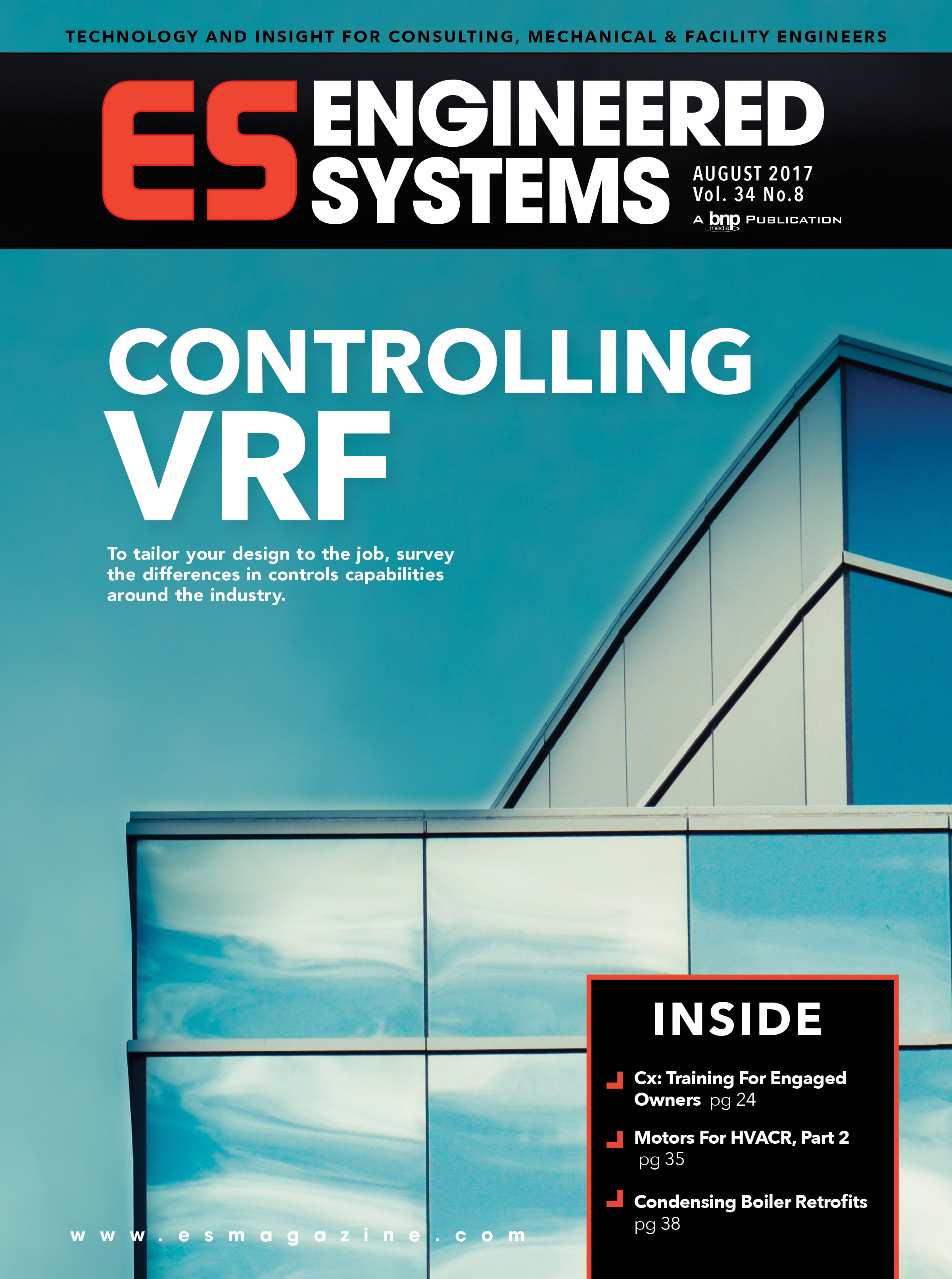Critical Need
One of the most important aspects of commissioning chiller plants, however, is the need to pay attention to the integrated "systems" associated with a new or modified chiller plant. Defining systems and the limits thereof is an important part of any commissioning plan, but it tends to be especially critical for chiller plants.Individual pieces of equipment such as chillers, cooling towers, pumps, heat exchangers, and thermal storage tanks are not systems. Central plant systems include the chilled water system, the condenser water system, the chemical treatment systems, refrigerant detection and emergency ventilation system, etc., all of which are made up of multiple components. However, do the central plant systems stop at the chiller plant walls?
No, they don't. The purpose of most central plants is to serve users, typically distributed cooling coils throughout a building or an entire campus of buildings. Therefore, the central chilled water system needs to include the individual users, and the design intent document (DID) is the place to document the performance requirements of the central systems as defined to meet the needs of the users. There is not much sense in designing, building, and commissioning a central plant if the commissioned performance does not match the requirements of the users.
If the central plant is planned to serve existing building systems, this process of defining user requirements can be quite painstaking. It requires knowledge of each coil's performance characteristics and the sequence for controlling its valve(s). It also requires knowing each building's distribution system controls, i.e., if there are any temperature or pressure control bypass loops, variable-speed drive tertiary pumps, etc. In the case of most campus settings, the answer to these questions varies from building to building and, often, coil to coil, depending on the vintage of the building system installations and the professionals who designed them.
Planning Ahead
Will the new plant be designed and controlled to serve the existing operational parameters of the buildings, or will the building systems need to be modified in order to work properly with the new plant configurations and controls? If the latter, the individual building system retrofits should be included in the central plant commissioning work. For example, if the central plant chillers are selected for a high-efficiency 14¿ to 18¿F DELTA T, it is probably critical to the operation of the entire system that the coils served are capable of operating at those higher DELTA T's. That may require providing lower chilled water supply temperatures and rebalancing (decreasing) the water flow to each coil originally designed for a lower DELTA T.Clearly, if the central plant is being designed to serve an entirely new campus of buildings, the background work is less onerous, but the importance of coordinating the building system designs with the central plant design cannot be underestimated. For example, if water-side free cooling is included, the year-round, relatively constant load chilled water coils in each building (i.e., those serving interior spaces without economizer control, such as computer room air conditioning units or process equipment) need to be designed for the warmer chilled water supply temperatures expected under the free-cooling mode during the winter.
All these performance requirements are perfect for inclusion in the DID prepared prior to the commencement of any serious plant equipment sizing, selection, and layout. Central chiller plants cannot be designed and constructed in a vacuum because a chiller plant is useless as a standalone monument. It needs to meet the needs of the building users in order to be considered successful. Once a comprehensive, customized DID is prepared, the commissioning process proceeds exactly as it would for any other type of facility "system." ES


